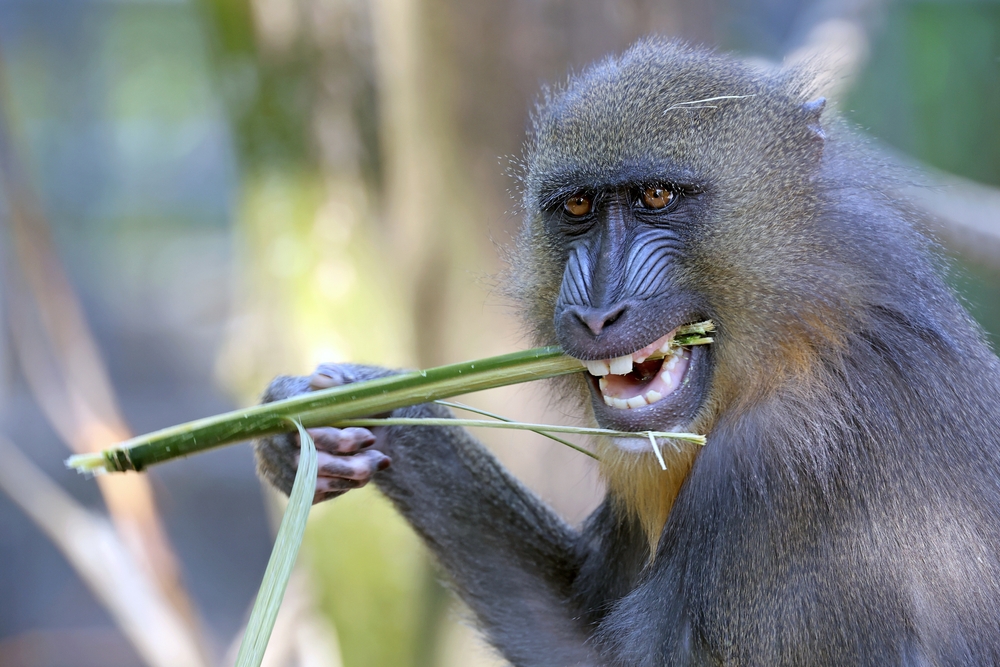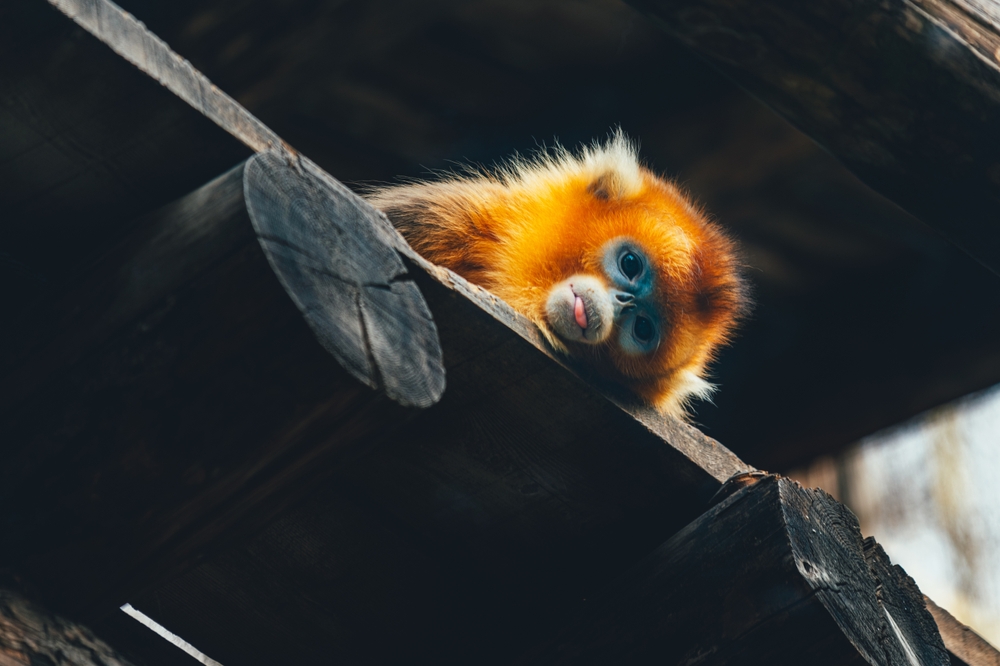Copyright © Everyday Narrative 2024. All rights reserved.
Copyright © Everyday Narrative 2024. All rights reserved.
- An Everyday Narrative Gallery Special -
The 10 closest Monkeys to Humans

If you believe in the evolutionary link between monkeys and humans, understanding which monkey species are closest to us can be incredibly enlightening.
These primates offer unique insights into our own evolution, social structures, and behaviours.
Here are the 10 closest monkeys to humans, ranked in order of their evolutionary proximity.
1. Rhesus Macaque

The rhesus macaque is one of the most widely studied primates in scientific research due to its genetic, anatomical, and physiological similarities to humans.
Sharing about 93% of their DNA with humans, rhesus macaques have been instrumental in understanding human disease, neuroscience, and reproductive biology. Their complex social structures and behaviours, such as grooming, hierarchical organisation, and communication, closely resemble those of early human societies.
The use of macaques in biomedical research, including vaccine development and neurological studies, further highlights their importance as a model for human biology and evolution.
2. Baboon

Baboons, a group of Old World monkeys, are known for their complex social structures and highly organized societies. They exhibit behaviours such as kinship bonding, hierarchical leadership, and territoriality, mirroring some aspects of human social dynamics.
Baboons are highly adaptable, living in diverse environments from savannas to woodlands, which has led to varied behavioural adaptations.
Studies of baboon behaviour have provided insights into the evolution of social behaviour and cognition in humans. Their facial expressions, vocalisations, and social grooming practices also show significant parallels to human social communication.
3. Vervet Monkey

Vervet monkeys are another Old World monkey species that provide significant insights into human evolutionary biology. Known for their distinct alarm calls that communicate different types of predators, vervet monkeys demonstrate a complex understanding of language and social learning.
This behaviour mirrors early human communication development. Vervets are also studied for their behaviours related to kinship, cooperation, and social learning, which reflect fundamental aspects of human social behaviour. Their ability to adapt to various environments and resource availability makes them an interesting subject in studies of human ecological adaptation.
4. Japanese Macaque

Japanese macaques, also known as snow monkeys, are notable for their adaptability to cold environments and their unique cultural behaviors, such as bathing in hot springs and washing food. These behaviors reflect a high level of problem-solving ability and social learning, akin to human cultural practices.
The Japanese macaque’s strong social bonds and complex hierarchy provide a window into the evolution of social organisation in humans.
Researchers have also studied them to understand the development of social norms, cooperation, and the transmission of knowledge through generations, aspects vital to human culture and society.
5. Mandrill

Mandrills are known for their vibrant facial coloration and complex social structures, making them one of the most visually striking and socially dynamic Old World monkeys. Their behaviour, which includes extensive grooming and social hierarchies, mirrors that of early human societies. Mandrills use facial expressions and vocalisations to communicate, similar to the way humans use non-verbal cues in social interactions.
The study of mandrill social behaviour and organisation offers insights into the evolutionary pressures that shaped human social evolution, particularly in terms of mate selection, status, and social bonding.
6. Colobus Monkey

Colobus monkeys, recognised for their unique dietary specialisation on leaves, provide a fascinating parallel to human dietary evolution. While not as closely related to humans genetically as some other monkeys, their unique social behaviours, including cooperative breeding and allomothering (care provided by individuals other than the mother), offer insights into the evolution of social cooperation and family structures.
The study of colobus monkeys can provide valuable information on the dietary adaptations and social strategies that may have been employed by early human ancestors living in forested environments.
7. Patas Monkey

Patas monkeys are known for their remarkable speed and terrestrial lifestyle, living primarily on the ground rather than in trees. Their social structure, which consists of small, stable groups led by a single male, provides insights into the evolution of social organization and mating systems in primates, including early humans.
Patas monkeys have been studied for their efficient foraging strategies, predator avoidance behaviors, and social dynamics, which can offer parallels to the behaviors of early human hunter-gatherer societies. Their adaptation to savanna environments also provides clues to how early humans adapted to similar habitats.
8. Proboscis Monkey

The proboscis monkey, known for its distinctive large nose, is a unique member of the Old World monkey family. These monkeys are highly social and live in multi-level societies, which resemble some aspects of human social organization. Their complex vocal communication and swimming abilities are of particular interest to researchers studying the evolution of communication and behaviour.
Proboscis monkeys also display a unique dietary adaptation, feeding on leaves, seeds, and fruit in their mangrove and riverine forest habitats, offering parallels to early human foraging behaviours and dietary flexibility.
9. Golden Snub-Nosed Monkey

Golden snub-nosed monkeys, found in the mountainous forests of China, are known for their distinctive golden fur and blue faces. They live in large, multi-level societies, which are complex and involve intricate social bonds, mirroring early human social structures. Their adaptability to harsh, cold environments provides insights into how early humans might have adapted to diverse and challenging climates.
The study of their social behaviour, including cooperative care and strong family bonds, offers valuable parallels to human evolutionary strategies for survival and reproduction in similar environments.
10. Gelada

Geladas, often referred to as “bleeding-heart monkeys” due to their distinctive chest markings, are the only primates that primarily feed on grass. Found in the highlands of Ethiopia, geladas live in large, complex social groups with intricate hierarchies and social bonds. Their vocal communication system is one of the most sophisticated among non-human primates, providing fascinating insights into the evolution of human language and social interaction.
Geladas’ unique adaptations to a grass-based diet and their complex social dynamics offer valuable parallels to early human foraging and social behaviours in similarly challenging environments.
The similarities between the Monkeys and Humans

These ten monkey species provide a fascinating glimpse into the evolutionary link between humans and our closest living relatives in the primate world.
Their complex behaviours, social structures, and environmental adaptations continue to offer invaluable insights into our own species’ past, highlighting the remarkable continuity of life across millions of years of evolution.
Gallery Specials
Latest Articles
- Disney Remakes the Timeless Classic ‘Snow White’
- Here’s what to expect from Season 4 of Slow Horses, only on Apple TV+
- Marvel’s ‘Agatha All Along’ coming soon
- Adam Sandler Announces ‘Happy Gilmore 2’
- Jennifer Lopez files for divorce from Ben Affleck to end her fourth marriage
- On this day in 1995, the Battle of Britpop reached its climax
- Vince Vaughn Returns in the New Dark Apple TV+ Comedy ‘Bad Monkey’
- Matt Damon and Casey Affleck lead a star-studded cast in ‘The Instigators’
- The anticipation builds for ‘The Last of Us’ Season 2
- Has Simone Biles cemented her place as the greatest American Olympian of all time?
- Anticipation grows for the Disney sequel ‘Moana 2’
- A battle begins at Royal Troon for The Open Golf Championship 2024
- The evolution of binge-watching
- Tom Hanks reunites with Robin Wright in ‘Here’
- Taylor Swift’s ‘Eras Tour’ is a phenomenal success















